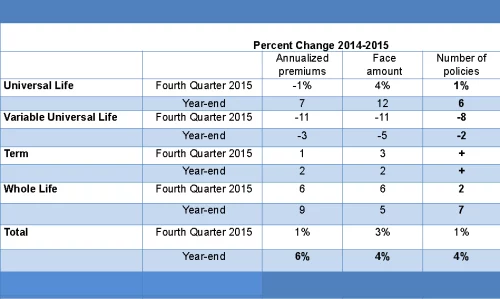Rajkotupdates.news is a news platform that provides updates on various topics including the impact of the COVID-19 pandemic in Rajkot, a city in the Indian state of Gujarat. One of the recent articles on the website discusses the effect of the third wave of COVID-19 on life insurance policies.
What is Life Insurance?

Life insurance is a financial product that provides a lump sum payment to beneficiaries upon the policyholder’s death. The policyholder pays regular premiums to the insurance company, which guarantees the payment to the beneficiaries upon the policyholder’s death.
The purpose of life insurance is to provide financial security to the policyholder’s loved ones in case of their untimely death. The beneficiaries can use the lump sum payment for various purposes such as paying off debts, covering living expenses, and funding future expenses such as college education or retirement.
Life insurance policies can vary in terms of coverage amount, premium amount, and length of coverage. Some policies may also offer additional benefits such as investment opportunities, cash value, and critical illness coverage.
Life insurance is an important financial tool that can provide peace of mind to individuals and their families. It is important to carefully consider one’s needs and choose a policy that provides adequate coverage to ensure financial stability for loved ones in case of the policyholder’s death.
How Much Life Insurance Does One Need?

The amount of life insurance one needs depends on several factors, including their income, expenses, debts, and future financial goals. There is no one-size-fits-all answer to how much life insurance one needs, as it varies depending on individual circumstances.
As a general rule of thumb, it is recommended to have life insurance coverage that is at least 10 times one’s annual income. For example, if someone earns $50,000 per year, they should consider a life insurance policy with a coverage amount of at least $500,000.
In addition to income, one should also consider their current and future financial obligations. Determining the appropriate coverage amount may include considering mortgage payments, credit card debt, car loans, and other expenses that would need to be covered in the event of the policyholder’s death.
Additionally, future financial goals such as college education for children or retirement savings may also need to be taken into account.
It is important to review one’s life insurance coverage regularly to ensure it still aligns with their financial situation and goals. A financial advisor can provide guidance on determining the appropriate coverage amount and selecting the right policy.
Who Takes Life Insurance Policies?

Individuals who want to provide financial security to their loved ones in case of their untimely death typically take out life insurance policies. This includes anyone with dependents such as a spouse, children, or aging parents who rely on their income for support. Business owners may also take out life insurance to provide financial protection to their business in case of their death or to fund a buy-sell agreement between business partners.
Those with outstanding debts such as a mortgage, car loans, or credit card debt may also consider taking out a life insurance policy to ensure that their debts are paid off in case of their death.
Although life insurance policies may be taken out at any age, premiums generally increase as one gets older. It is recommended to consider taking out a life insurance policy early in life when the premiums are lower and before any health conditions may arise that could make it more difficult to obtain coverage.
In summary, anyone who wants to provide financial security to their loved ones or their business in case of their death may take out a life insurance policy.
How Do I Get a Life Insurance Policy?

Getting a life insurance policy typically involves the following steps:
- Determine your needs: Before getting a life insurance policy, you should determine how much coverage you need based on your financial situation and goals. Consider factors such as your income, expenses, debts, and future financial obligations.
- Shop around: Research different insurance companies and policies to compare coverage, premiums, and benefits. You may consider working with a licensed insurance agent who can provide guidance on selecting the right policy.
- Apply for coverage: Once you have selected a policy, you will need to complete an application and provide personal and medical information. The insurance company may require a medical exam, depending on the policy and coverage amount.
- Underwriting: The insurance company will review your application and medical information to determine if you are eligible for coverage and what premium you will need to pay.
- Acceptance and payment: If you are approved for coverage, you will need to accept the policy and make premium payments to keep the coverage active.
It is important to carefully review the terms and conditions of the policy and ask any questions before accepting coverage. It is also recommended to regularly review your coverage to ensure it still aligns with your financial situation and goals.
What are Third Wave Corona Effects on Life Insurance Rates?

The third wave of the COVID-19 pandemic has had an impact on life insurance rates in some countries. In general, life insurance companies are closely monitoring the pandemic and adjusting their rates and underwriting practices as needed to manage their risk.
One potential impact of the third wave on life insurance rates is an increase in premiums for policies that require a medical exam. Insurance companies may be more cautious in underwriting policies and may require additional medical information or postpone medical exams until after the pandemic subsides.
In some cases, insurers may also limit coverage for individuals who have tested positive for COVID-19 or who have been in close contact with someone who has tested positive.
On the other hand, some life insurance companies have introduced new policies specifically tailored to address the impact of COVID-19. These policies may provide coverage for COVID-19 related illnesses or offer additional benefits such as waiver of premium if the policyholder becomes unemployed due to the pandemic.
Overall, the impact of the third wave on life insurance rates will depend on factors such as the severity of the pandemic in a particular region, the underwriting practices of individual insurers, and the specific terms and conditions of each policy. It is important for individuals to review their coverage regularly and stay informed of any changes in rates or coverage.
Can I Still Receive Investment Returns with a RLI policy?

With RLI policies, if the policyholder outlives the term of the policy, the insurance company will return the premiums paid during the term of the policy, tax-free. This means that the policyholder will receive a refund of the premiums they paid, but will not receive any investment returns or interest on the premiums.
If you are looking for a life insurance policy that offers investment returns, you may consider permanent life insurance policies such as whole life or universal life insurance. These policies offer a death benefit as well as a cash value component that can accumulate interest over time and potentially provide investment returns. However, these policies often have higher premiums than term life insurance policies like RLI.
It is important to review the terms and conditions of any life insurance policy carefully and speak with a licensed insurance agent or financial advisor to determine which type of policy is right for your individual needs and goals.
Why do insurance rates go up so often in Rajkot?

- Economic conditions: The economic conditions in a region can impact insurance rates. For example, if there is a high rate of unemployment or financial instability, insurance companies may raise rates to compensate for increased risk.
- Natural disasters: Natural disasters such as floods, earthquakes, and cyclones can cause significant damage to properties and increase the risk of insurance claims. Insurance companies may raise rates in response to these events.
- Claim frequency: If the number of insurance claims filed in a region increases, insurance companies may raise rates to offset the cost of paying out claims.
- Changes in regulations: Changes in regulations or laws can impact insurance rates. For example, if there are changes to the tax code or insurance regulations, insurance companies may adjust their rates accordingly.
- Cost of reinsurance: Insurance companies themselves purchase reinsurance to protect themselves against large losses. The cost of reinsurance can impact insurance rates for policyholders.
It is important to note that insurance rates can vary depending on the insurance company, the type of coverage, and individual risk factors such as age, health, and driving record. It is recommended to shop around and compare rates from multiple insurance companies to find the best coverage and rates for your individual needs.
Idiosyncrasies of life insurance rates in Rajkot

- Health factors: Life insurance rates in Rajkot may be impacted by health factors such as the prevalence of certain diseases or health conditions in the region. For example, if there is a higher incidence of heart disease or cancer in Rajkot, insurance rates may be higher for individuals with those health conditions.
- Lifestyle factors: Lifestyle factors such as smoking or drinking habits, exercise habits, and diet can also impact life insurance rates in Rajkot. For example, individuals who smoke or have a history of heavy alcohol consumption may be charged higher rates due to increased health risks.
- Age and gender: Life insurance rates can vary based on age and gender. Younger individuals may be charged lower rates than older individuals, and women may be charged lower rates than men due to differences in life expectancy.
- Occupation: The nature of an individual’s occupation can also impact life insurance rates in Rajkot.
Insurance companies may charge higher rates to individuals in high-risk occupations such as mining or construction due to the increased risk of injury or death on the job.
Local competition: The competition among life insurance companies operating in Rajkot can also impact rates. Insurance companies may adjust their rates to remain competitive in the market.
It is important to note that life insurance rates can vary significantly depending on individual risk factors and the specific terms and conditions of each policy.
To determine the best coverage and rates for your individual needs, it is recommended that you compare rates from multiple insurance companies and speak with a licensed insurance agent or financial advisor.
Conclusion
In conclusion, life insurance is an important financial tool that can provide financial protection and peace of mind to individuals and their families. The amount of life insurance needed can vary depending on individual circumstances, such as income, debts, and dependents.
A variety of factors, including health and lifestyle factors, age and gender, occupation, and local competition among insurance companies, can influence life insurance rates in Rajkot and other regions. It is important to shop around and compare rates from multiple insurance companies to find the best coverage and rates for your individual needs.






